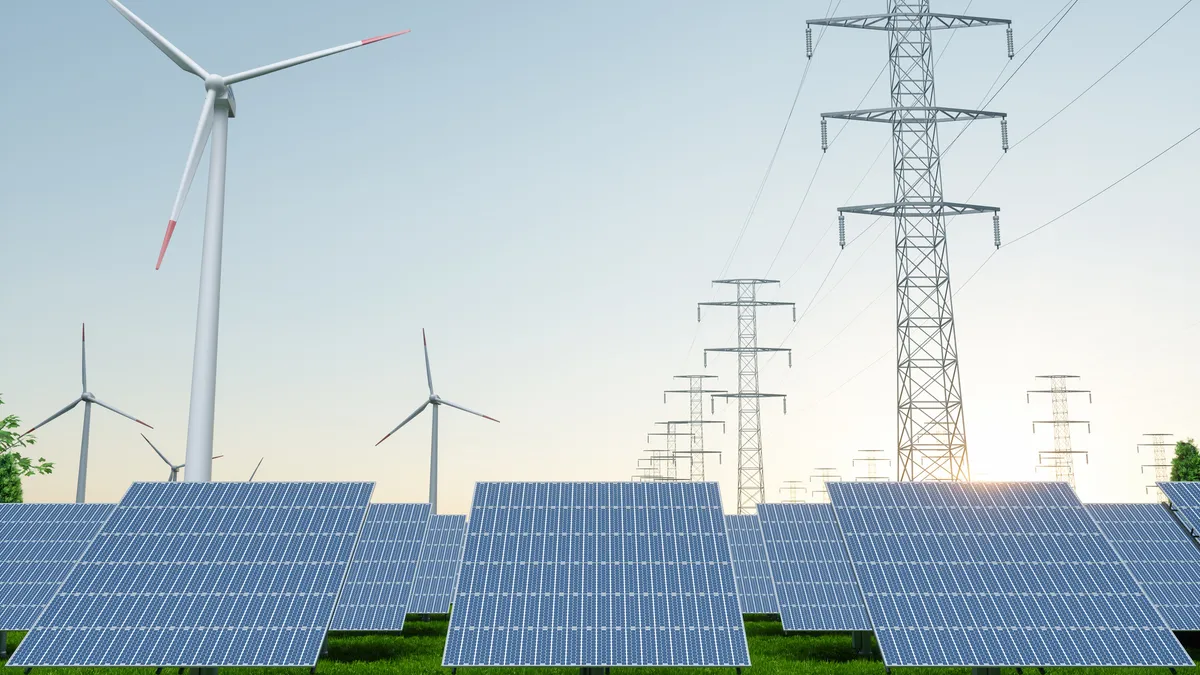Jon Wellinghoff is CEO and Founder of Grid Policy and served as the chairman of the Federal Energy Regulatory Commission from 2009 to 2013. Pat Wood is CEO of Hunt Energy Network and served as the chairman of the Federal Energy Regulatory Commission from 2001 to 2005.
Experts believe that this summer has been the hottest ever recorded on Earth. At the same time that severe weather events are wreaking havoc on our power systems, U.S. energy costs rose two times faster than inflation in 2022. These trendlines are alarming and rightfully capture our attention. Also alarming? The sentiment among some of our nation’s federal electricity regulators that we should move away from open, competitive markets toward monopoly-dominated structures. In the face of pressing cost, climate and grid reliability challenges, this shift would have massive negative consequences for all Americans.
Historically, individual utilities across the country were granted permission to operate as the sole provider of a region’s power. In 1992, Congress eventually came to the bipartisan opinion that competition in markets, not monopolies, would lead to better service and lower costs for customers. Competitive wholesale markets started to form and allowed power plant owners to compete to supply electricity demand. Over two-thirds of the U.S. demand is now served this way, and the crux of Congress’ prediction proved true. Competitively restructured markets have generally resulted in better service and lower costs. And they have stimulated a swifter move to a cleaner power sector.
The old way of cost-plus regulation that we know well has led to bloated cost structures and inefficiencies. That government-centered system lacks the competitive pressure necessary for the timely and cost-effective adoption of renewable technologies. The absence of market-driven price signals hampers innovation and the adoption of cleaner energy solutions, ultimately resulting in higher costs for customers.
The need for cleaner power has prompted new challenges for electricity markets. For example, Democrats argue that market mechanisms like capacity payments — revenue that power plant owners receive in exchange for guarantees to provide reliable power — hinder progress towards a zero-carbon grid, while Republicans raise concerns about renewable subsidies undermining price signals and reliability. The solution lies in improving the competitive market system, not a return to monopolies. By leveraging forces of supply and demand, competitive markets facilitate the adoption of cleaner energy options in a cost-effective manner. The result is significant emissions reductions achieved faster. According to a study by Josh Rhodes of the University of Texas, “regions in the U.S. that are associated with [competitive markets] reduced their total carbon emissions (from 2005 to 2019) by about 35%, whereas other regions only reduced their carbon emissions by about 27% over the same period.”
And, crucially, the power simply has to work. Electricity reliability is an issue of increasing concern with more frequent and severe weather events and a growing national reliance on sources that vary in their energy output, like wind and solar. Texans all remember the outage events in 2021 (a competitive market) just as North Carolinians remember their outages in 2022 (a regulated market). These events demonstrated that improvements can and should be made regardless of the system. Further, competitive markets facilitate the implementation of demand response programs, incentivizing customers to adjust electricity usage during peak periods and alleviating strain on the grid. By fostering innovation, investment and efficient coordination, competitive electric markets play a crucial role in enhancing grid reliability and resilience.
If our goals are more affordable, cleaner and more reliable electricity, we should be leaning into continually improving the competitive system, not moving away from it. Options for doing so include refining the payment process for guaranteeing reliability, exploring market signals that ensure for the availability of adequate new resources to meet new electrification needs, and upgrading the tools used to forecast future demand. Ultimately, however, to further clean up the grid, experts agree that carbon pricing is the best, most cost-effective option.
A carbon price would provide a correct market signal to innovators who can decarbonize at the lowest price and give the market long-term certainty to invest in lower emitting resources. If the political will could be summoned, a carbon price would accomplish this without threatening the ability to meet demand or creating some of the market distortions that other well-intentioned climate approaches have.
At the end of the day, competitive market systems have proven more effective at driving cost-effective decarbonization than single-utility markets, all while fostering reliability and long-term planning. The current wholesale electric market has demonstrated its ability to transition to cleaner energy sources and keep costs in check. Amid the debates over climate change, energy policy and grid security, it is crucial to recognize that a system anchored in a competitive market structure still delivers the best results.





















